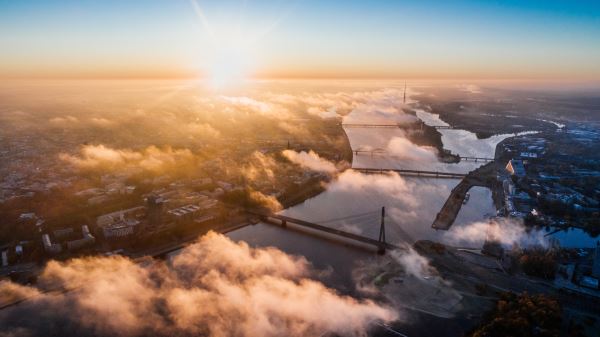求乐山大佛的英文介绍
Leshan Buddha, also known as Lingyun Buddha, is located at Lingyun Temple on the East Bank of Nanminjiang River in Leshan City, Sichuan Province. It is near the confluence of Dadu River,
Qingyi River and Minjiang River. The Great Buddha is a sitting statue of Maitreya Buddha. It is 71 meters high. It is the largest stone statue on a cliff in China.

Leshan Buddha was excavated in the first year of Kaiyuan in Tang Dynasty (713), and completed in the nineteenth year of Zhenyuan (803), which lasted about ninety years.
Leshan Grand Buddha Scenic Spot, which consists of Leshan Grand Buddha, Lingyun Mountain, Wuyou Mountain and Huge Crouching Buddha, belongs to the national 5A-level tourist attraction and is a part of the world cultural and natural heritage Emeishan-Leshan Grand Buddha.

On October 8, 2018, the Jiuqu Trestle Road of Leshan Grand Buddha Scenic Area was closed before construction began. On April 1, 2019, the preliminary research and survey on rescue protection of the damaged area of Leshan Grand Buddha in Sichuan Province,
which lasted nearly half a year, ended. Leshan Grand Buddha officially "left the customs", and the Jiuqu Trestle Road and the Buddha foot sightseeing platform of the scenic area were reopened.

扩展资料
乐山大佛,又名凌云大佛,位于四川省乐山市南岷江东岸凌云寺侧,濒大渡河、青衣江和岷江三江汇流处。大佛为弥勒佛坐像,通高71米,是中国最大的一尊摩崖石刻造像。
乐山大佛开凿于唐代开元元年(713年),完成于贞元十九年(803年),历时约九十年。
乐山大佛和凌云山、乌尤山、巨形卧佛等景点组成的乐山大佛景区属于国家5A级旅游景区, 是世界文化与自然双重遗产峨眉山-乐山大佛的组成部分。
2018年10月8日,乐山大佛景区九曲栈道处已经开始施工前打围封闭。 2019年4月1日,历时近半年的四川乐山大佛残损区域抢救性保护前期研究及勘测工作结束,乐山大佛正式“出关”,景区的九曲栈道和佛脚观光平台重新开放。
百度百科-乐山大佛
乐山大佛英语导游词景点作文
乐山大佛是唐代摩岩造像的艺术精品之一,也是世界上最大的石刻弥勒佛坐像,国家5A级旅游景区。下面是百分网我给大家整理的乐山大佛英语导游词,仅供参考。
乐山大佛英语导游词
The city of Leshan is less than one hour's ride from the Baoguosi Monastery at the foot of Mt.Emei.Leshan is the home of the Giant Buddha at the conflueence of the Min,Dadu and Qingyi rivers.It qualifies as the largest Buddha in a sitting posture in the world .You must board a riverboat for the best view of the Giant Buddha.The massive Buddha was carved out of a cliff face more than a thousand years ago, but now it is still well preserved in good shape, with his full and serene face.
The Buddha is the largest Buddha in China,towering to 71m,with his 14.7m head,and 24m shoulders.The Buddha's ears are 6.72m long, insteps 8.5m broad, and a picnic could be conducted on the nail of his big toe, which is 1.5m long.
This carving project was begun in 713.Each summer at that time the Min,Dadu and Qingyi rivers flowed down.As the ghree rivers met,turbu-lent waves strucd each other hard,boats capsized and boatmen vanished.There was a Buddhist monkby the name of Haitong in Lingyun Hill,who saw the situation and was determined to carve a giant Buddha out of the cliff face, hoping that the Buddha's presence would subdue the swift currents and protect the boatmen .Haitong started travelling along the Changjiang river and other areas in China to collect funds for the gigantic carving. Once an evil official attempted to obtain by force the money collected by Haitong.The monk refused him in strong terms.He said,"I'd rather gouge out my eyes than give a penny to you,"The official shouted in anger,"gouge your eye out now!"Haitong resolutely dug out one of his eyes.
The monk's behavior in protecting the funding so greatly encouraged sculptors and other construction workers that the carving work went on smoothly. Unfortunately Haitong died before the completion of his life's work .However, this work continued due to the support of the local people as well as Weigao and Zhangchou Jianqing,the local top military commanders. The word took up 90 years until 803 when it was completed.Since then the Buddha has watched over the river traffic for more than a thousand years to offset the large number of serious accidents in the river. Modern Chinese question whether safer boat gravel is due to his presence or to sime later-day dredging.
As you get close to the Buddha,we can find out some scattered holes im rows around the Buddha.They are remains of so Called the Giant Buddha Pavilion . It was a nine-storied building set up during the Tang Dynasty to shelter the Buddha.It was renamed as the Lingyun Pavilion with 13 stories during the Song Dynasty. Unfortunately it was destroyed by a war during the Ming Dynasty. Since then the Buddha remains outside in the open space.
The Giant Buddha has lasted over a thousand years, and still survives in good shape.Why? First of all, according to the studies on the ancient construction of the Buddha,the cliff face the Buddha occupies enjoys topographical advantages. It is on the southern side of the hill,where verdant trees grow so well as to protect rocks and slope from erosion.Secondly although the Buddha seats bordering on the confluence of the three rivers, the immense statue is carved into the cliff face inside the hill,which alleviate the severe damage by wind and water erosion.Finally there is a water-drainage system,hidden from view.The system starts with 1021 fastened hairs, which conect one another at the bace of the bead .The end of the hairs inter-links the shoulders,joining the simple-patterned robe pleats carved on the body.The hairs,shoulders and pleats naturally reveal a complete system that carries away the entire surface water on the body, where the water disappears underground.It is worth making several passes at the Buddha.From the ferry pier on the island,you climba steep road and through Lingyun Temple to a vantage point for viewing the buddha.You can go to the top,opposite the head, and then descend a short zigzag stairway carved into the cliff to the feet for the top,oppoosite the head,and then descend a short zigzag stairway carved into the cliff to the feet for the different perspective viwepoints.A local boat passes by for a frontal view, which reveals two guardians in the cliff side, not visible from land,Wuyou Buddhist Monastery can be reached in 15 minutes by footpath from the Buddha,which is also from the Tang Dynasty with Ming and Qing renovations,Its layout is very similar to the other monasteries as we mentioned before.Walking along up Wuyou Hill,you can enjoy the quiet and beartiful scenery, The top of Wuyou Hill affords you a vision of an emerald-green tree forest, glazed golden tiles of the monastery roofs and the distant rivers.
It would be a mistake to thind of Leshan as one big Buddha, but it is worth making a trip to Leshan,which will provide you with a pleasant picture made by the ancient Chinese sites and the beautiful nature being combined into a whole.
乐山大佛导游词篇一
爱的游客们,你们好!我是你们的小导游——郑涵文。今天,我们游览的是世界上最大的一座石刻像,游客们,你们知道它是谁吗?对了,它就是四川的乐山大佛。走,随我去看看吧!
乐山大佛修凿在岷江、大渡河和青衣江汇合处的`凌云山的临江山崖上,与乐山城隔水相望。
游客们,在我们身旁的就是形象生动、气魄宏伟的乐山大佛。瞧,佛像坐东面西,双眼似睁似闭。它高71米,仅头部就有10米宽,双肩的距离为24米,耳长6米,可藏进几个人。不可思议的是,一只脚背上竟可站100多人!游客们,还要一点你们可能不知道,佛像的头颈背后,筑有完善而巧妙的排水系统使佛像免受山洪冲蚀。所以它被誉为世界艺术珍品。
现在让我给大家讲讲乐山大佛的历史吧。它从唐代开始修凿,人们爬上高山峻岭,攀登悬崖峭壁,一锤一锤地凿,一刀一刀地刻,从公元713年至公元803年,整整化了90年的时间才凿刻完工。佛像经过了1000多年的风霜雨露,至今仍完好无损,安详端坐。
1956年,乐山大佛被四川省列为重点保护文物,而今,它已和我国其他28处景观被列入了《世界遗产名录》,是举世闻名的世界文化遗产。
好了,介绍完了乐山大佛,就让我们一起登上凌云山峰,看看这举世闻名的乐山大佛吧!请不要在佛像上刻字哦。
乐山大佛导游词篇二
大家好,欢迎你们来到铅笔俱乐部,现在,我又欢迎你们来到四川,我是你们的导游,我们的第一个目标就是我身后的这座高大的山峰——乐山!
去之前希望大家能注意一下现在请听我说一下:“因为,这时山峰,会很危险,所以请小朋友注意不要乱跑,还有请大家看到了大佛,不要太激动得在上面乱涂乱画,破坏文物,还有不能随地吐痰、乱扔垃圾、随地大小便,如果被保安发现了可是要罚钱哦!到时候,可别说我没说哦!好了现在就和我一起去登山去看看乐山大佛吧!
现在,大家登山了山顶,一定发现了在我背后有一座佛像,不错,这就是驰名中外的乐山大佛,这大佛,有71米长。这 这里,被人们称为A4级风景区,古有”上朝峨眉,下朝凌云“之说。么高的大佛,你们知道是谁建造的吗?就让我揭开谜底吧!
相传,唐朝的时候,贵州有一个和尚叫:海通,他是一位很聪明的和尚,他云游四海,很愿为百姓做好事儿,让百姓得福。
一年夏天他来到四川嘉州。听说府城城东凌云山正江水汹涌、波浪滔天,危害生灵。一天,他想去看一看究竟,便攀着岩壁来到凌云山脚。忽见一个壮年男子躺在水边,一动不动左手拿钻,右手拿锤。海通看了,马上把他背了起来,过了好一会儿,那名男子才慢慢苏醒过来。
原来那名男子叫石青 ,是一个石匠,看海通救了自己,就和海通和其他一些劳动人民一起动手,在上面雕刻了在古今中外鼎鼎有名的乐山大佛。
时间如飞,好了我们该下山了,谢谢你们能和我一起去看乐山大佛,听我讲那些事情,你们满意,我就高兴,欢迎你们下次再来,拜拜!
四川各大旅游景点的英文名字,全面一点,多一点
四川各大旅游景点的英文名字是:
1、龙潭溶洞(Longtan cave):
龙潭溶洞位于攀枝花米易县白马镇,距攀枝花104千米,距米易县城26千米,位于龙肘山下、安宁河滨,是省级风景名胜区、国家AA级旅游区。
2、九寨沟(Jiuzhaigou Valley Scenic and Historic Interest Area):
九寨沟位于四川省西北部岷山山脉南段的阿坝藏族羌族自治州九寨沟县漳扎镇境内,地处岷山南段弓杆岭的东北侧。距离成都市400多千米,系长江水系嘉陵江上游白水江源头的一条大支沟。
3、剑门关(Jianmen Pass Beauty Spot):
剑门关风景区是国家AAAAA级旅游景区,国家级风景名胜区,全国重点文物保护单位,国家森林公园,国家自然与文化双遗产,全国100个红色经典旅游景区之一。中国知名旅游目的地,国家文化产业示范基地,全国爱国主义教育基地,四川省自然保护区,四川省地质公园。
4、乐山大佛(Leshan Giant Buddha):
乐山大佛,又名凌云大佛,位于四川省乐山市南岷江东岸凌云寺侧,濒大渡河、青衣江和岷江三江汇流处。大佛为弥勒佛坐像,通高71米,是中国最大的一尊摩崖石刻造像。
5、峨眉山(Mount Emei):
峨眉山位于北纬30°附近,四川省西南部,四川盆地的西南边缘,是中国“四大佛教名山”之一,地势陡峭,风景秀丽,素有“峨眉天下秀”之称,山上的万佛顶最高,海拔3099米,高出峨眉平原2700多米。
用一些英文来介绍乐山大佛,并且翻译
乐山大佛地处四川省乐山市,岷江、青衣江、大渡河三江汇流处,与乐山城隔江相望。乐山大佛雕凿在岷江、青衣江、大渡河汇流处岩壁上,依岷江南岸凌云山栖霞峰临江峭壁凿造而成,又名凌云大佛,为弥勒佛坐像,是唐代摩岩造像的艺术精品之一,是世界上最大的石刻弥勒佛坐像。 Sichuan leshan giant Buddha is located in leshan, minjiang river, tsing yi jiang, dadu river sanjiang the confluence at the leshan city and the pearl river. Leshan giant Buddha carved in minjiang river, tsing yi jiang, dadu river HuiLiuChu the rock, minjiang river in southern LingYunShan qixia peak cliff made from the river cut, another name for more Buddha, symbolizes the tang dynasty, is MaYan yuangang images of fine arts is one of the world's largest stone carvings of yuangang symbolizes.
 塞浦路斯景点(塞浦路斯在哪个国家)
塞浦路斯景点(塞浦路斯在哪个国家)
 错那景点(藏北那曲有哪些景点)
错那景点(藏北那曲有哪些景点)
 景点类别(南京必去的旅游景点有哪些)
景点类别(南京必去的旅游景点有哪些)
 曼海姆景点(海德堡的主要景点)
曼海姆景点(海德堡的主要景点)
 阿布扎比 景点(阿布扎比海洋世界在哪)
阿布扎比 景点(阿布扎比海洋世界在哪)
 红枫景点(台州中华红枫园好玩吗)
红枫景点(台州中华红枫园好玩吗)



